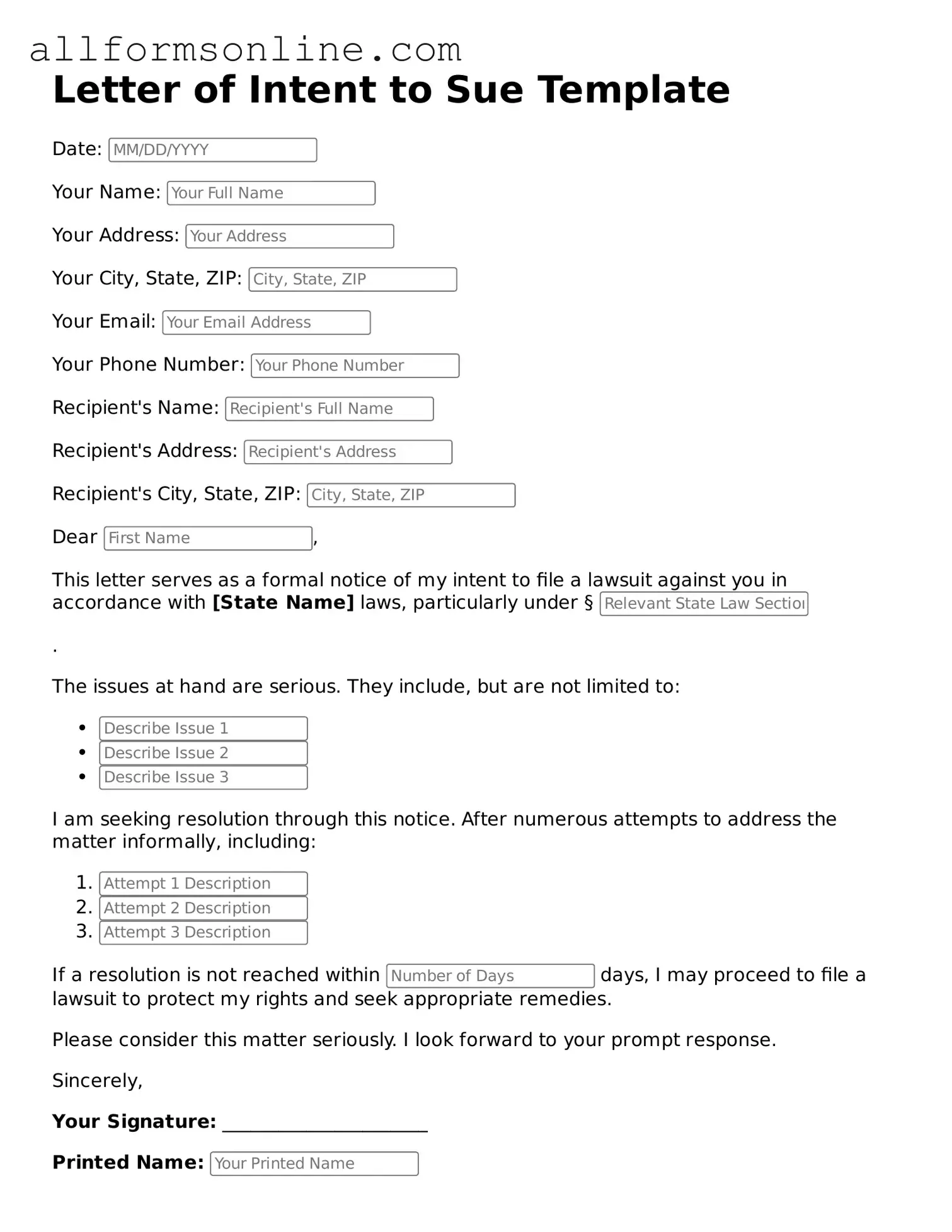What is a Letter of Intent to Sue?
A Letter of Intent to Sue is a formal document that notifies an individual or organization of a potential legal claim. It serves as a preliminary step before filing a lawsuit. This letter outlines the grievances of the sender and indicates the intention to pursue legal action if the issues are not resolved. It can be an effective way to encourage a resolution without the need for court involvement.
When should I send a Letter of Intent to Sue?
Individuals typically send a Letter of Intent to Sue when they believe they have a valid legal claim but want to give the other party an opportunity to address the situation before escalating to litigation. This can occur in various scenarios, such as disputes over contracts, personal injuries, or property damage. Sending this letter can demonstrate seriousness and may prompt a resolution or settlement.
What should be included in a Letter of Intent to Sue?
A well-crafted Letter of Intent to Sue should include several key elements. First, it should clearly identify the parties involved. Next, it should describe the specific issues or grievances that have led to the intent to sue. Additionally, the letter should outline the desired outcome or resolution. Finally, it is important to set a timeline for the response, indicating when further action may be taken if no resolution is reached.
Is a Letter of Intent to Sue legally binding?
Generally, a Letter of Intent to Sue is not legally binding. It serves primarily as a notice and a means of communication regarding the sender's grievances. However, the contents of the letter can be significant if the matter proceeds to court. Courts may consider the letter as evidence of the parties' attempts to resolve the dispute amicably.
How should I deliver a Letter of Intent to Sue?
Delivery of a Letter of Intent to Sue can be done in several ways. Sending it via certified mail is a common method, as it provides proof of delivery. Alternatively, personal delivery can be effective, especially if the parties are in close proximity. Emailing the letter may also be an option, but it is advisable to follow up with a more formal method to ensure receipt.
What happens after I send a Letter of Intent to Sue?
After sending a Letter of Intent to Sue, the recipient typically has a specified period to respond. They may choose to address the concerns raised, propose a settlement, or deny the claims. If the issues remain unresolved, the sender may decide to proceed with filing a lawsuit. It is important to keep records of all communications during this process, as they may be relevant if legal action is taken.
